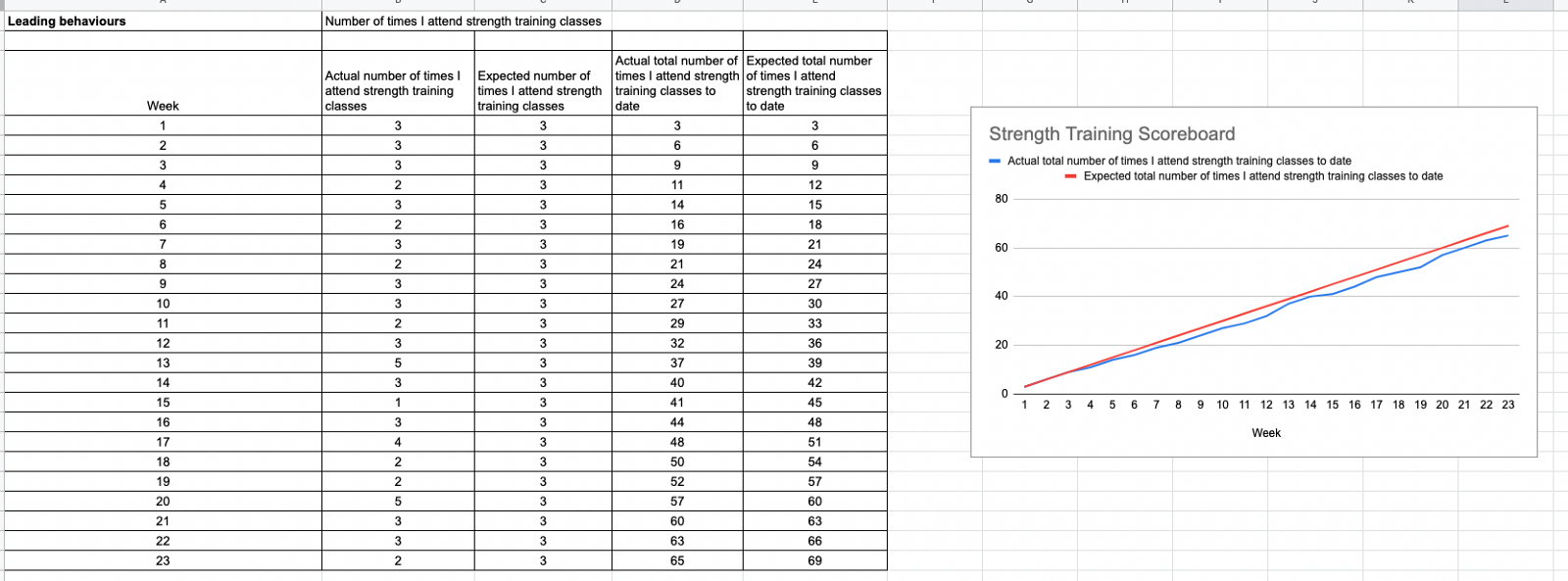“You do not rise to the level of your goals. You fall to the level of your systems.”

Truth be told, I am one of those guilty of having a sudden burst of the “new year new me” motivation. It led me to set up a few ambitious goals for the year. And for a while, I would be all fired up and inspired. But that bout of positive energy quickly fizzled into nothingness, and I was pretty much the same old me.
As a product manager, I continuously have to define clear objectives and success metrics for my product, and yet, I have shied away from personal goal setting year after year, ashamed of my own lack of discipline.
I realized my lack of success was best explained by this quote from James Clear.
“You do not rise to the level of your goals. You fall to the level of your systems.”
And since the product management framework practiced in my professional life does enable product teams to achieve new heights, I decided to try adopting its principles to my personal goal management.
Leading behavior vs lagging outcome
Classic example: if I want to lose weight, should I set my goal as losing 5kg or exercising 3 times a week?
I was confused about whether the goal should capture an outcome (lose 5kg) or a behavior (exercise 3 times a week).
They are closely related. In order to lose 5kg, there are many methods, one of which would be to exercise regularly.
Tracking the outcome is direct. Regardless of which methods I choose, tracking the outcome itself lets me know whether I succeed or fail.
However, precisely because this outcome does not capture the leading behaviors required to realize it, I am fuzzy about what actions I need to take on a daily basis.
In other words, weight loss is a lagging outcome. By the time I weigh myself on a scale at the end of the month, it is already too late to make adjustments to the behaviors in that month.
A more effective way to structure this goal would be as follows.
- Objective: become healthier
- Lagging result: lose 5kg in 5 months (by 17 July)
- Leading metric: number of strength training hours clocked per week
- Leading behavior: attend my strength training classes 3 times a week
The leading behavior of attending strength training classes is what I have direct control over. For example, if I missed the third session because it fell on a day when I am often very busy at work, I could quickly make the adjustment to my training schedule from next week onwards instead of waiting until the end of the month wondering why there is no progress.
Leading metric as the North Star
In the section above, you saw a mention of the leading metric or the North Star metric (a reference to how North Star leads our way in the darkness).
The more you influence the leading metric, the more likely the lagging result will improve. For instance, the more hours of strength training clocked per week (leading metric), the more weight I am likely to lose (lagging result).
I know I know. Some of you might think that the above relationship is not necessarily true. And I will not debate that. In fact, choosing a leading metric is based on trials and errors. We pick one to the best of our knowledge. And monitor the relationship. If trying to improve it does not have a positive impact on the lagging result, then it is time to try out another leading metric.
Keeping a scoreboard of the leading behavior
When we keep scores, our innate competitiveness keeps us accountable. The scoreboard structure is simple. In my case, I log the actual number of times I attend strength training classes vs the expected number per week. Week after week, I have a visual representation of how well I am keeping up. A sample of the scoreboard can be found here.

Accountability
It has been shown that sharing your objectives with other people increases your sense of accountability. Though nobody is going to criticize you for not meeting your goals, the act of verbalizing them in front of an audience makes it more likely for you to commit.
If you have a support group to which you can share your weekly scoreboards, leverage them.
If like me, you are looking for like-minded individuals to create a circle of support where we keep one another accountable, come join me here.
If you want to see how this framework can be applied to your journey of building new income sources, check out this post here.

